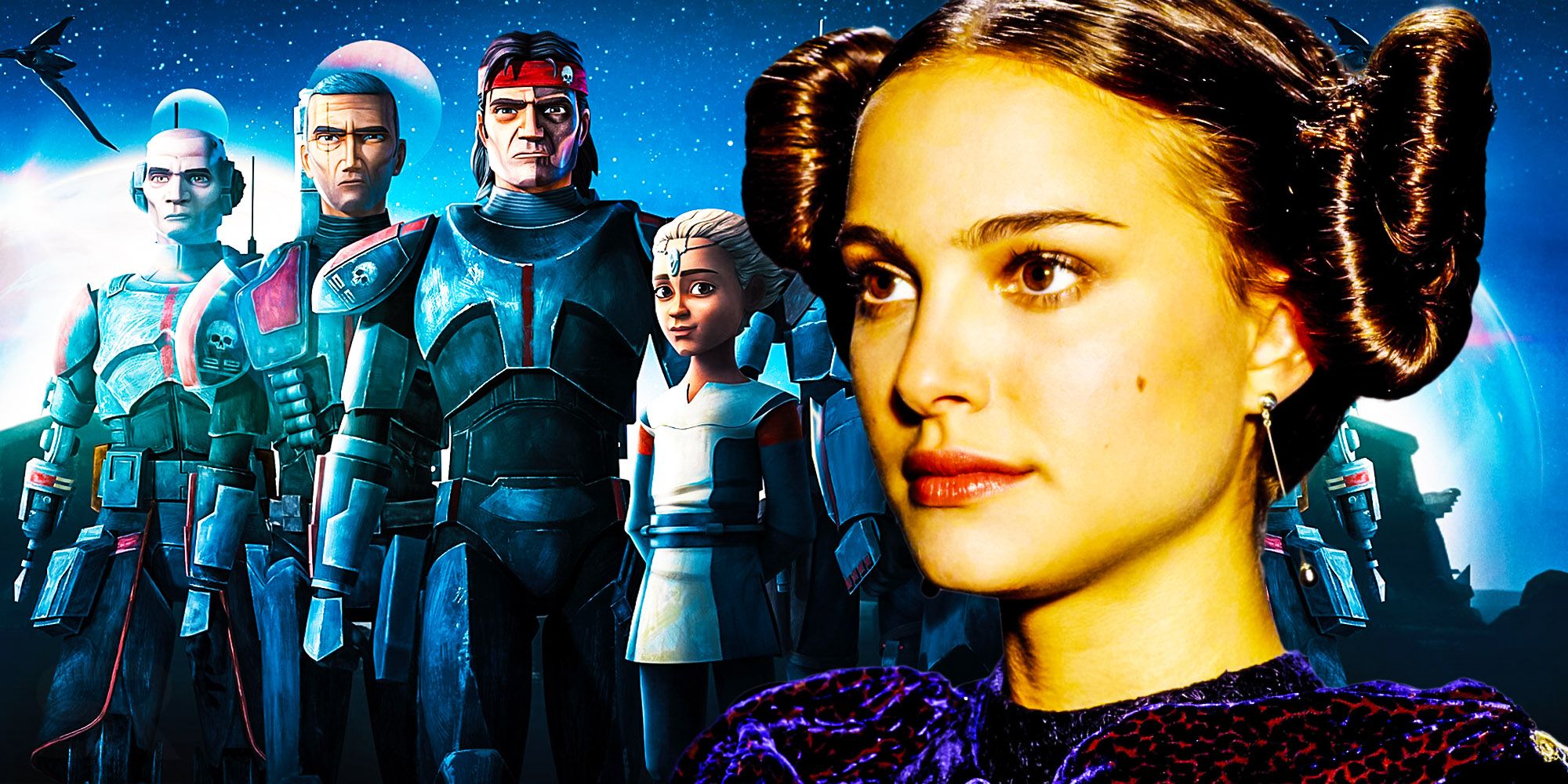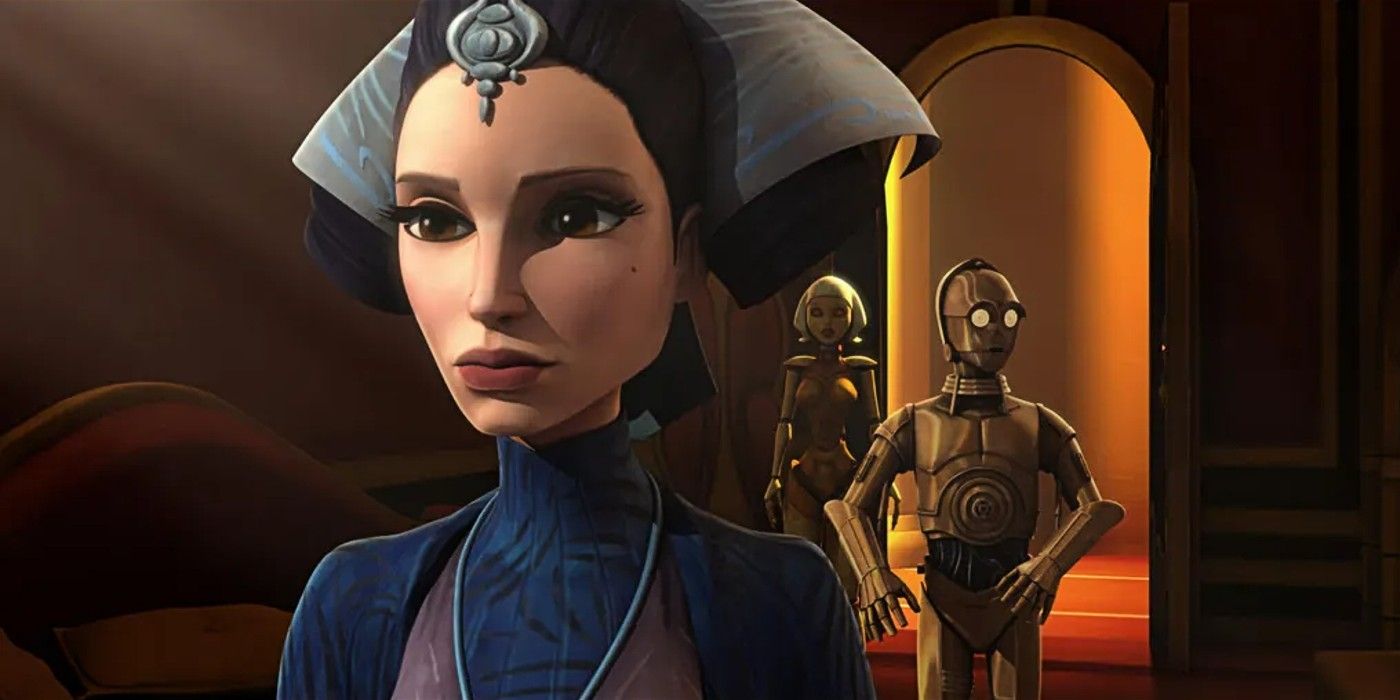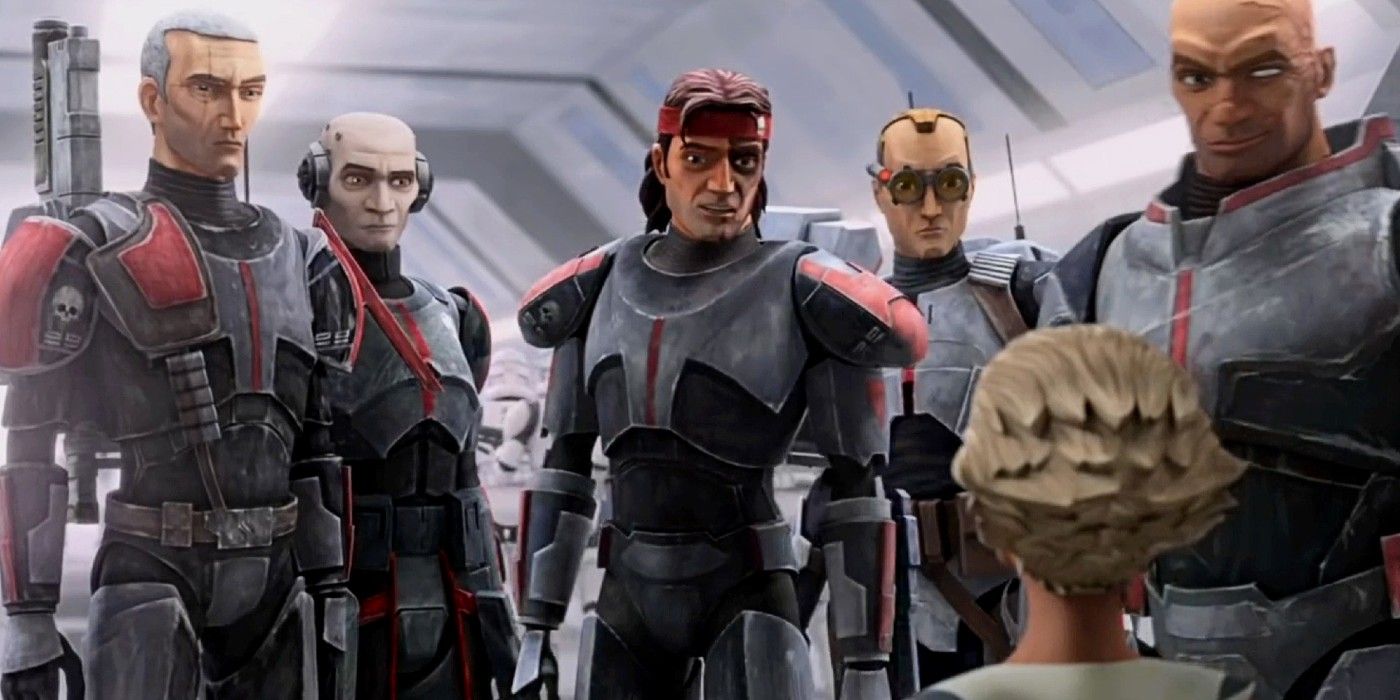Padme Amidala’s legacy in inspiring the rebellion against the Empire may finally be shown in Star Wars: The Bad Batch season 2. The success of The Bad Batch season 1 was in allowing Hunter, Tech, Wrecker, Echo, Crosshair, and Omega to carve out their own niche within Star Wars mythology. The Bad Batch season 2 looks to further expand the story of the genetically engineered soldiers of Clone Force 99 as they seek to find their place under the increasingly brutal control of the Galactic Empire.
Some of the events of Star Wars: The Bad Batch season 2 will also take place on the galaxy's capital, Coruscant. This was confirmed by composer Kevin Kiner in an interview with The Conver Call, who said, “I was just working this morning on a scene of Coruscant.” More intriguingly, he also claimed, “There’s some really neat political storylines that I’m very excited for people to see.” Since The Bad Batch is set at the beginning of the Galactic Empire, political scenes on Coruscant are likely to take place in the Galactic Senate and would give the show the potential to explore the early days of the rebellion against the Empire. As a result, The Bad Batch season 2 could finally show how the rebellion was truly Padme’s legacy.
Why Padme's Legacy Was Cut From Revenge Of The Sith
One of the biggest criticisms of Star Wars: Episode III - Revenge of the Sith was the sidelining of Padme Amidala. The character went from being a warrior queen in Star Wars: Episode I - The Phantom Menace to a role that amounted to little more than being pregnant and worried by the third prequel. However, this was not the original plan for the movie, with the details of this surviving through deleted scenes and Jonathon Stover’s Revenge of the Sith novelization. Instead, Padme was supposed to lead a subplot in which she and other Republic politicians, including Bail Organa and Senator Mon Mothma, formed a movement called the Delegation of 2000 to peacefully protest the government’s transformation into an authoritarian regime.
Naturally, this would have given Padme more agency within the narrative of Star Wars: Episode III - Revenge of the Sith, making it an odd decision for George Lucas to have removed these scenes. However, the Star Wars prequel trilogy had already received a lot of criticism for its strong focus on politics. As a result, it is not unreasonable to surmise that this may have been part of the reason for their omission in the third movie.
Additionally, Lucas’s rumored four-hour cut of Star Wars: Episode III - Revenge of the Sith may offer another explanation. The third installment was the most action-packed of the Star Wars prequel trilogy and had the unenviable task of showing how Anakin Skywalker became Darth Vader. To achieve this within a reasonable movie length meant that, while Padme’s subplot could have worked as a further wedge between her and Anakin, focussing on other events that caused his turn to the dark side was an unfortunate but understandable decision.
The Bad Batch Can Finally Give Padme A Legacy
By exploring Coruscant's political situation immediately following the Empire's rise, Star Wars: The Bad Batch season 2 has an opportunity to give Padme Amidala the kind of legacy that she deserves. In truth, it would not take all that much to do this. A simple mention of her name and perhaps the Delegation of 2000 would show how important her contribution to the fight against the Empire was. More than this, it would undermine the reductive notion of her being defined by her relationship with Anakin Skywalker or by being the mother of the Skywalker siblings, Luke and Leia. Padme was far more significant than that in Star Wars and an acknowledgment of her political achievements in Star Wars: The Bad Batch would be a more fitting way to honor her legacy.



